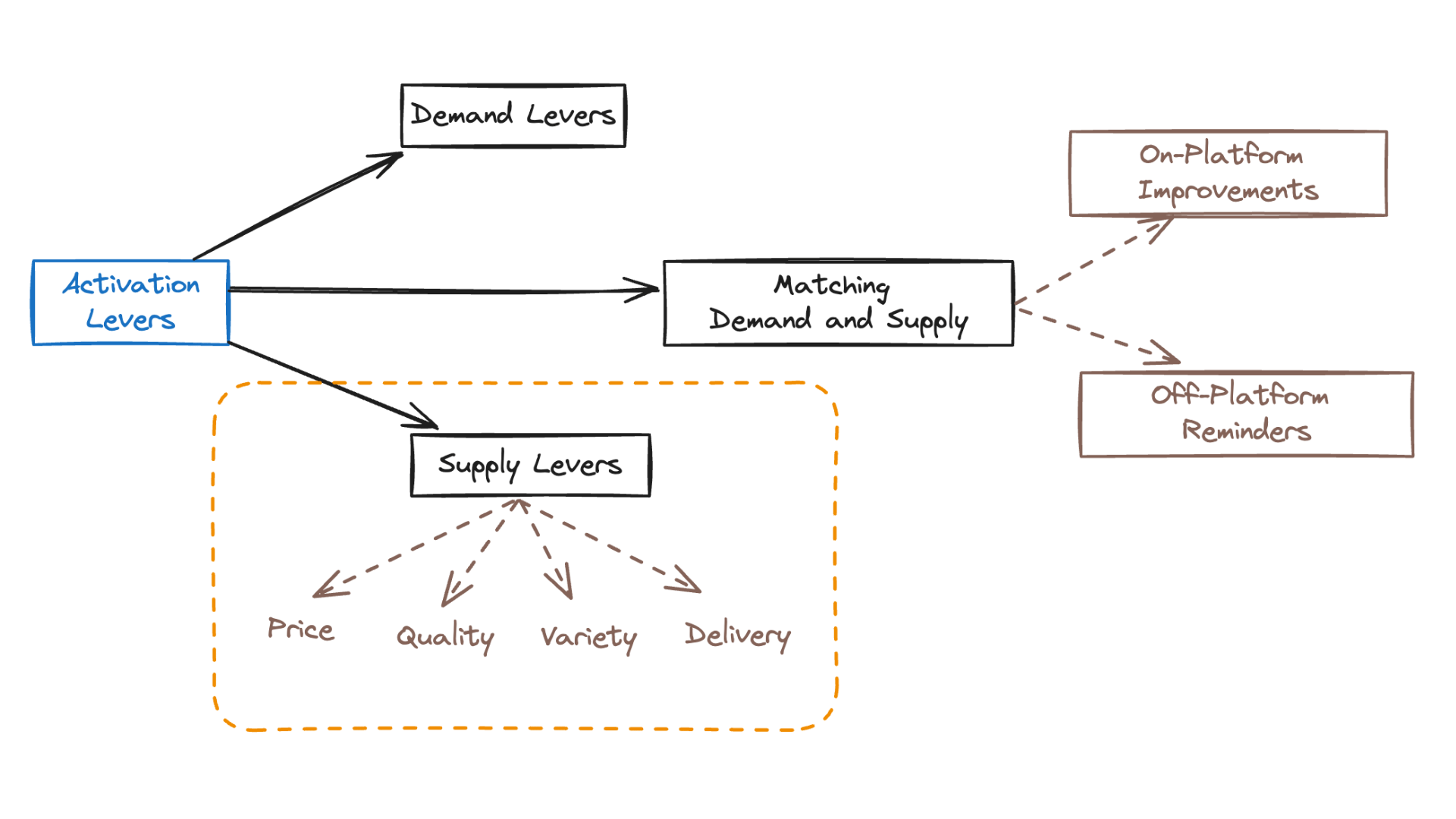How do Supply Side Levers Influence Activation Rates in D2C Brands?
After demand-side levers, the next structural bucket to explore is supply-side levers.
For Direct-to-Consumer (D2C) brands, the supply-side levers are price, variety, quality, and delivery. Let's explore them one by one.

Price:
Price is more than just cost; it represents the value proposition of a product. A competitive pricing strategy can attract cost-sensitive users, while a premium pricing model can appeal to those seeking high-quality products.
For instance, a D2C skincare brand might attract new users with affordable pricing for basic skincare products, highlighting value over luxury.
Variety:
Offering a diverse range of products can cater to a broader customer base, potentially boosting activation rates. A fashion retailer could offer various styles and sizes to attract a wider audience, each with different fashion needs and preferences.
A novelty food brand might provide a wide array of cuisines to cater to diverse taste preferences, thereby increasing its appeal to new users.
Quality:
Quality, often validated by customer reviews at activation stage, is crucial in building trust and driving conversions. High-quality products backed by positive reviews can significantly influence a new user's decision to try the product.
An electronics brand, for instance, can leverage glowing customer testimonials to establish credibility and attract new users seeking reliable tech products.
Delivery:
Delivery logistics, including coverage area and speed, are vital in meeting customer expectations. Brands offering fast and wide-ranging delivery services can attract users looking for convenience and immediacy.
A D2C grocery brand might gain activations by promising and delivering on swift, same-day delivery services, especially in urban areas.
Each of these elements – price, variety, quality, and delivery – play distinct roles in a D2C brand's strategy to improve activation rates. Balancing these aspects in line with the brand's identity and customer expectations is key to successfully attracting and activating users.